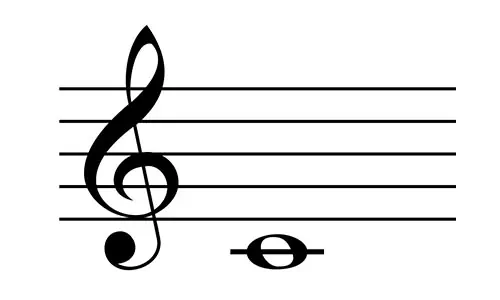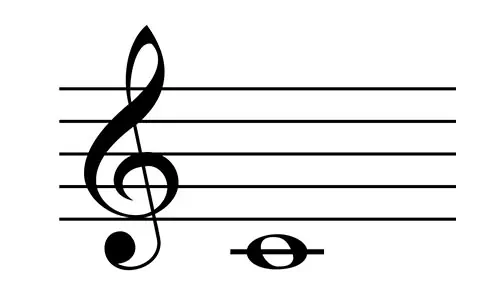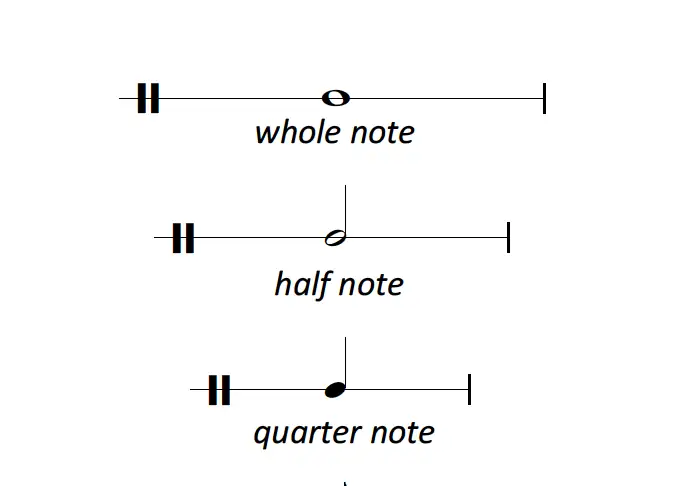Learning how to read music is really a different skill from actually playing the oboe. Within our 'Beginner's Guide To Learning The Oboe' collection, this particular section offers you ample info to start out practicing this amazing skill.
Music is actually a language; and like every language, it has a written form. Notation offers musicians throughout the world a tool to communicate. A composer writes their piece with specific symbols, and provided you can read music, it is possible to understand it, decipher it, and ultimately play it.
Instances of very early notation have been discovered on tablets going back as far as 2000 BC. Modern' staff notation', the method we now use, was made by Catholic monks to standardise church music.
Learning to read music will take dedication. There are no two ways about it, it's a hard skill to master.
If you are planning to play pop/rock music, it's not so vital that you learn how to read music. Even so, if you do, you'll find life a lot easier down the road.
It is possible to absolutely go down this path if you choose. Just be aware that like riding a bike, reading music is really a skill you never forget – and the benefits massively outweigh the negatives.
When you learnt to read and write, did you handle them as the exact same process? Of course not. Managing your hand motions by using a pen, mastering the forms of letters, learning how letters join together are all a radically different skill from using your eyes to understand what a combination of letters spells.
Learning to read music is the same.
Playing the oboe is really a radically different skill from reading the sheet music before you. Many badly skilled teachers try and teach both of these factors together – but the truth is known much better! Master them as individual skills that overlap. Doing this you'll have great results more quickly.
Basics Of Reading Musical Notation
For oboe, staff notation is actually organised around something known as the treble staff. This contains a stave (the name for the lines) of 5 lines and 4 spaces. It is usually marked using a treble clef (the squiggly thing at the start of the line)!
Middle C lies in the space at the very bottom of the stave, on an imaginary line.
Notes can sit on a line or in a space. The vertical position (height) of the note defines the pitch. The higher up the stave, the higher the pitch. When the note needs to go higher or below the stave lines, we add mini lines for any note that is higher or lower. Those lines are known as ledger lines.
To avoid counting up from middle C each time, we can take advantage of memory aids to recognise the notes. The four spaces in the treble staff spell out "FACE".
The 5 lines, base upwards, for the treble staff are E G B D and F. The easiest way to know them is usually to remember acronyms. The most well-liked is "Every Good Boy Deserves Football" – nevertheless I think you'll be able to create a much better version!
And also to display the actual way it all appears, this is actually the whole Treble Clef staff
When reading music, all of us read from left to right. And now we understand what position on the stave makes what note, we need additional instruction from the printed symbol. We need to know how long to hold the note for.
The shape of the note shows you how much time to play it.
- A whole note (or if you are in the UK, it's called a Semibreve) is an empty circle and lasts four counts.
- A half note (or if you are in the UK, it's called a Minim) adds a stem and lasts two counts.
- A quarter note (or if you are in the UK, it's called a Crotchet) fills in the circle and lasts one count.

Hurrah!
You have the details, now go and practice what you've discovered! What's that old saying about taking a horse to water, but you can't make it drink…
It won't shock you to realize that there is quite a bit more to reading music than what I've cited above. But we all have to begin somewhere – and when you can get to the point in which you remember all this info and find it easy, you'll then be ready to jump in more deeply with your hunt for understanding!

Katie Bennington
Katie Bennington enjoys a varied freelance career playing regularly with orchestras around the country such as the London Symphony Orchestra, Royal Philharmonic Orchestra, Aurora Orchestra, ENO, ENB, and CBSO. She is also a keen chamber musician and enjoys working in collaboration with artists from different genres. She is a Masters graduate of the Guildhall School of Music and Drama where she studied oboe with Richard Simpson, Gordon Hunt and David Walter, and cor anglais with Jane Marshall. She then went on to take part in the LPO's Foyle Future Firsts Scheme and in 2010 was a member of Southbank Sinfonia. She was a British Double Reed Society prize winner at the Barbirolli International Oboe Festival and Competition in 2009. At GSMD she was a Needlemaker's Woodwind Prize Finalist in 2008, and in Dec 2007 she won the Slaughter and May Musician of the Year Award. She plays on a Sound Alchemy Enigma oboe and a Loree Royal cor anglais.
Other posts by this author
Are You Experiencing 4 Feature Friday?
As regular as I want to be Elton John for a day, I send out an email to you with the four most brilliant things that you absolutely have to know about.
As long as it's music associated, it could land in the email. Brand new tunes, techniques, items, product reviews – anything at all.
You'll only get to see the weekly email if you register directly below. And we promise to never, ever spam.
Read the next post in this series:
fostertrunever.blogspot.com
Source: https://teds-list.com/beginners-guide/how-to-read-oboe-sheet-music/










0 Response to "Easy Oboe Solo Sheet Music Oboe Problems"
Postar um comentário